-
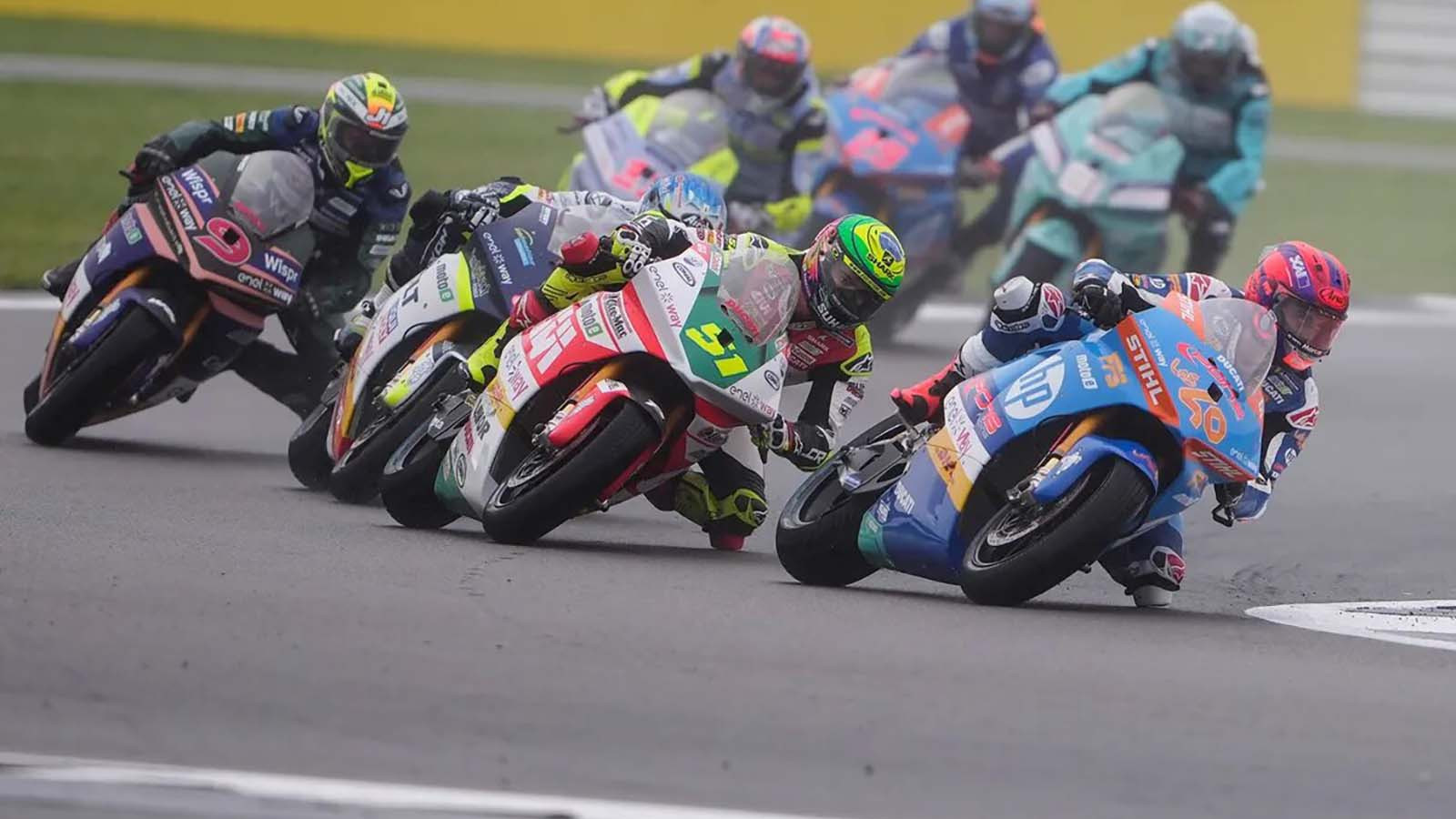 © MotoE
© MotoE -
 © Ducati
© Ducati -
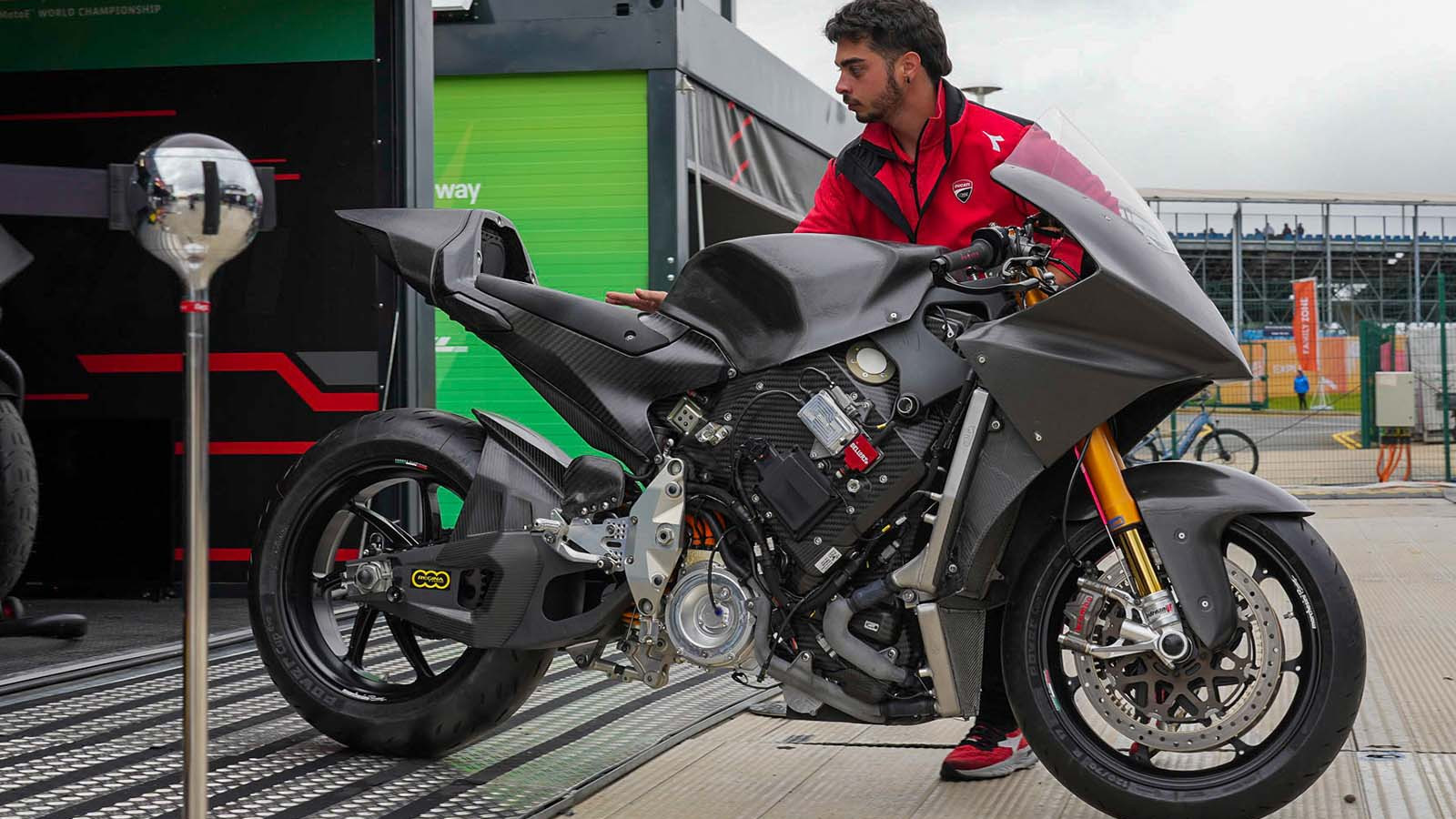 © Ducati
© Ducati -
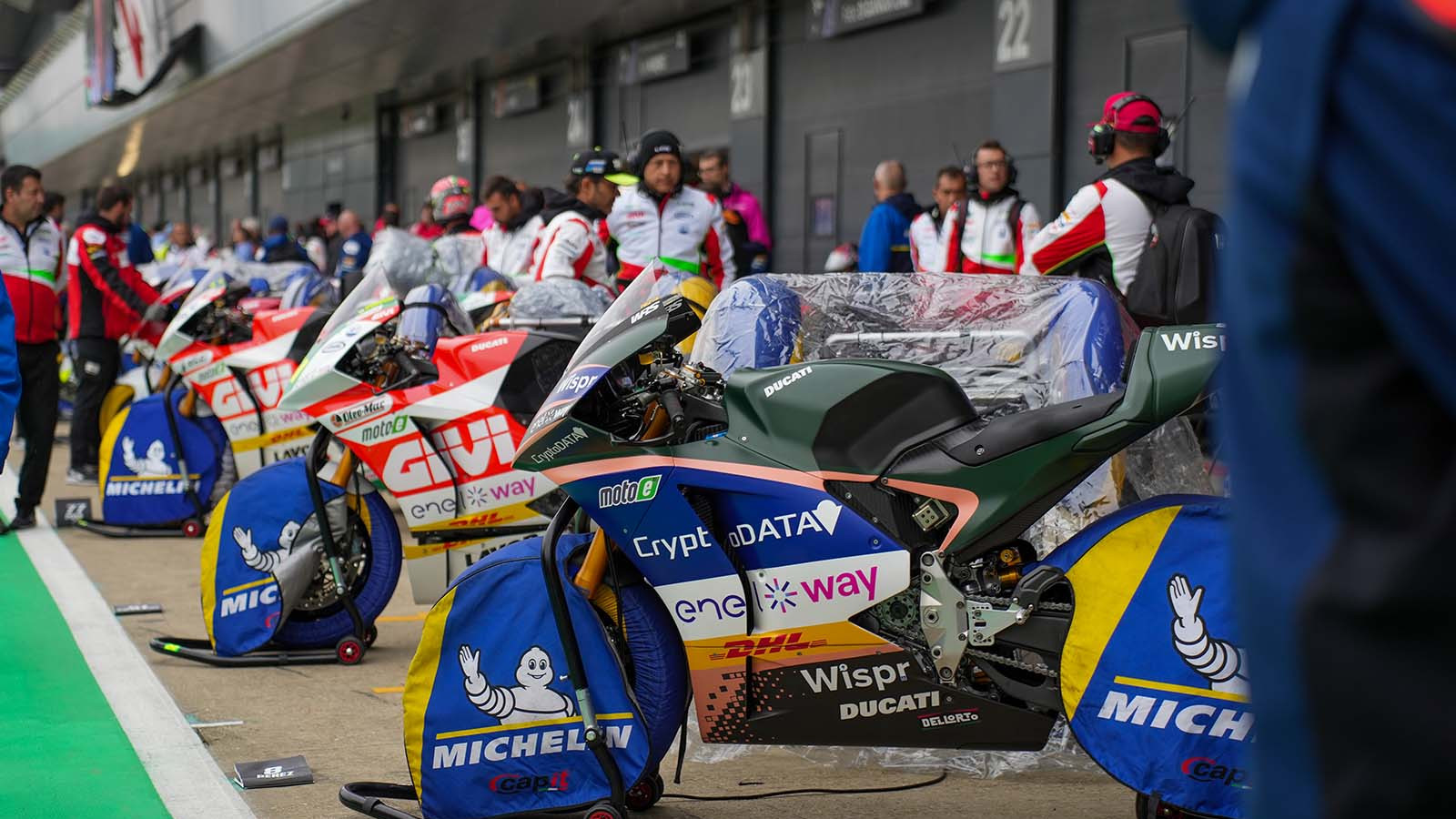 © Ducati
© Ducati -
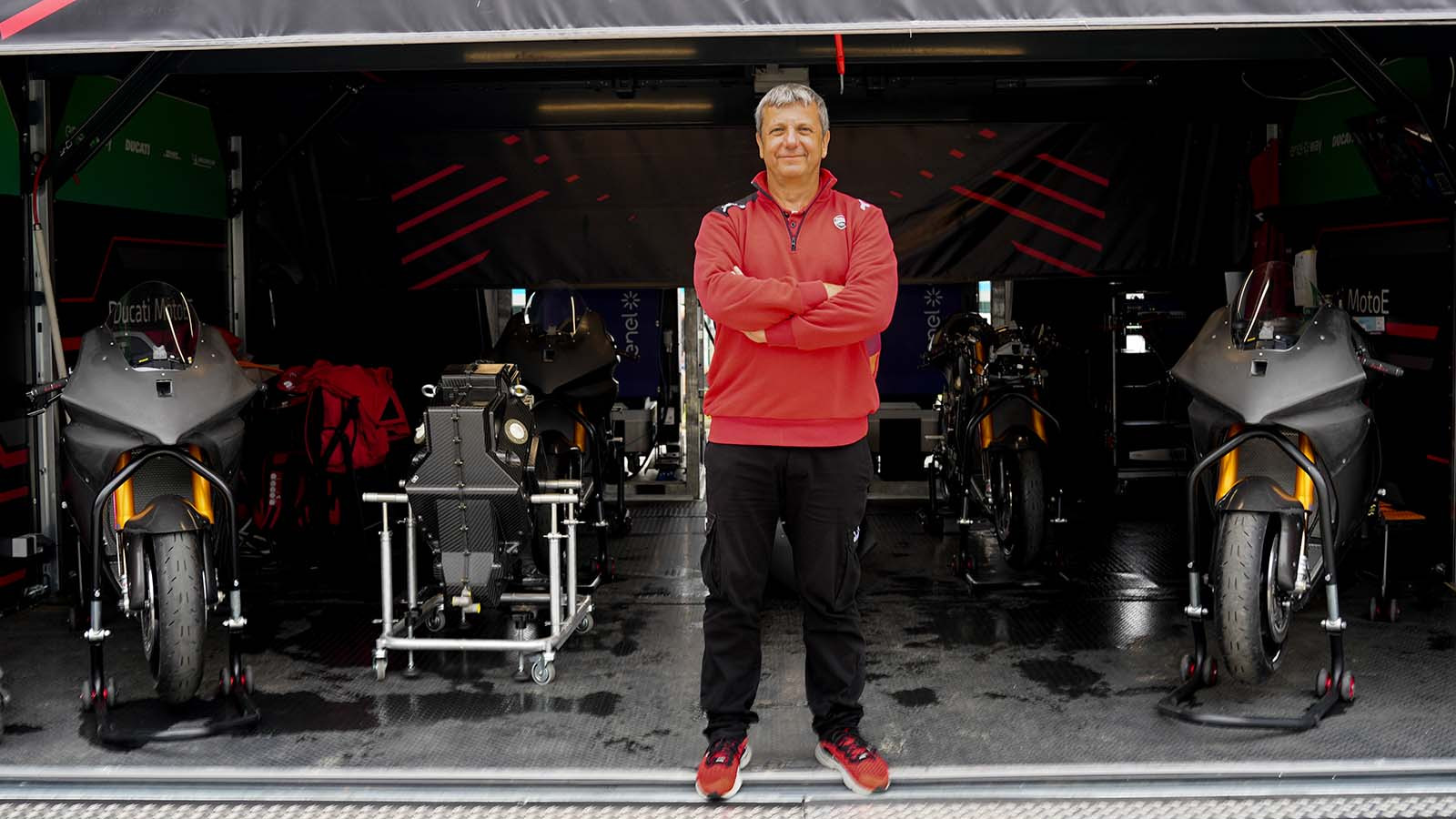 © Ducati
© Ducati -
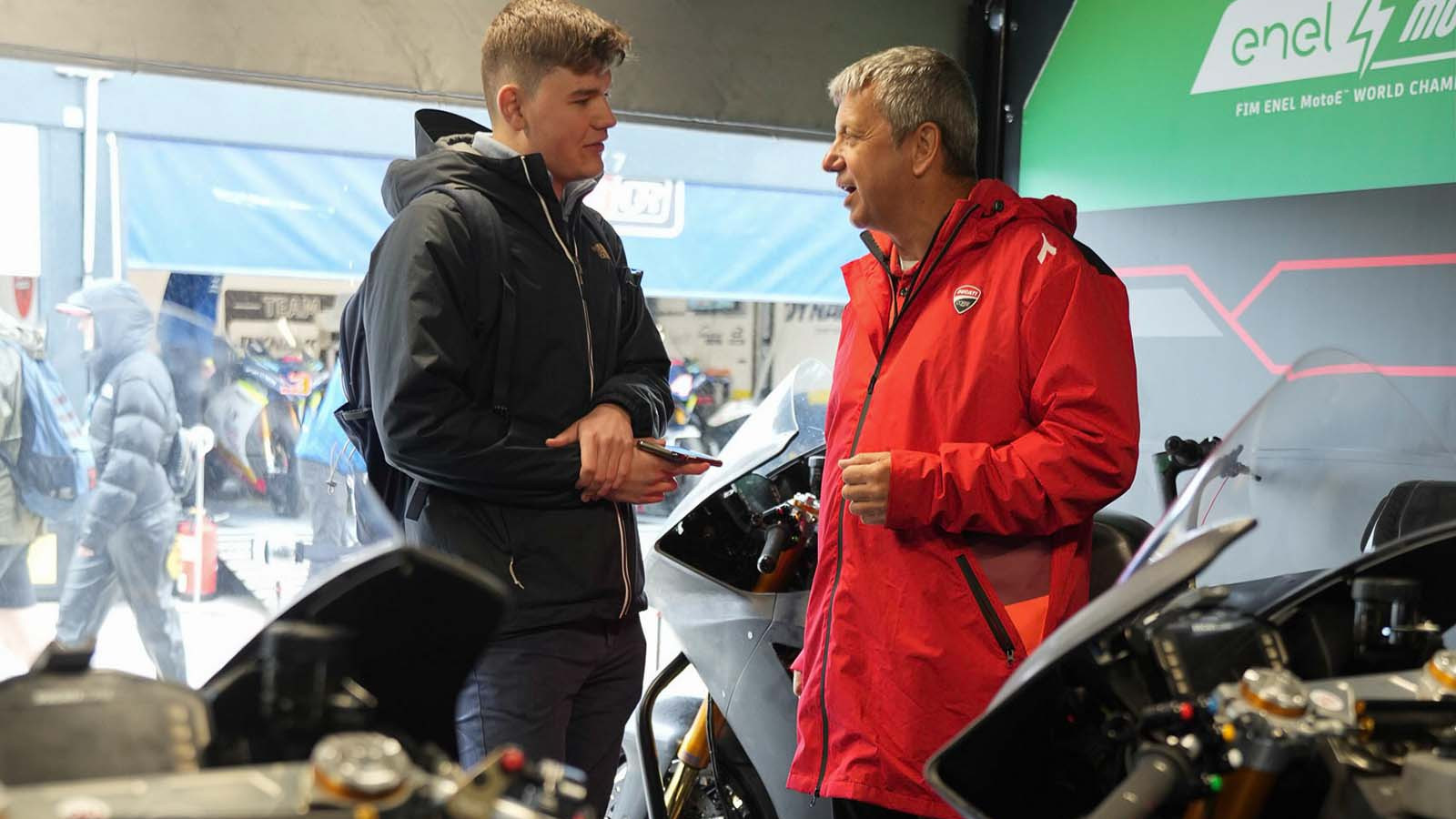 © Ducati
© Ducati -
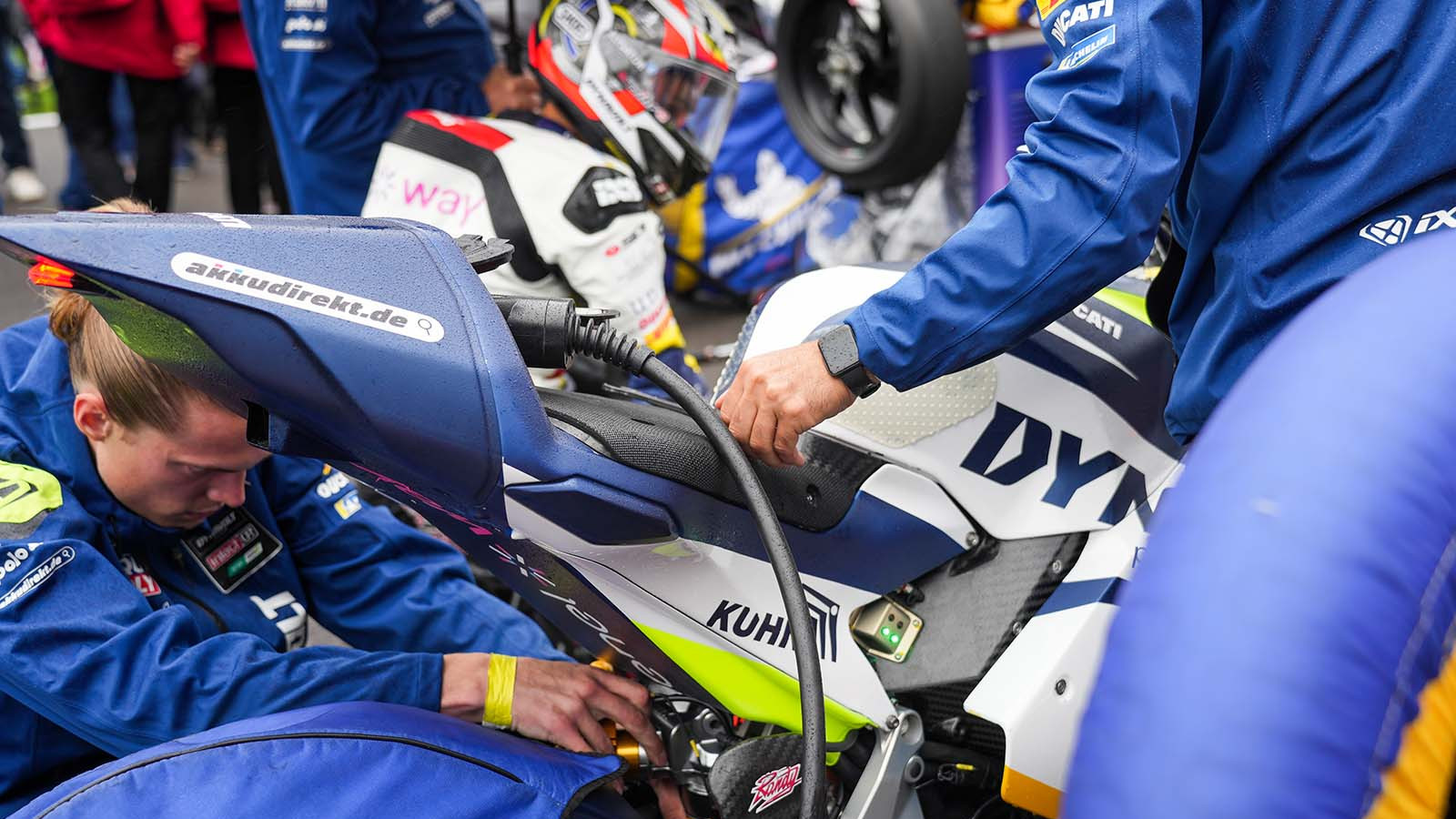 ©
© -
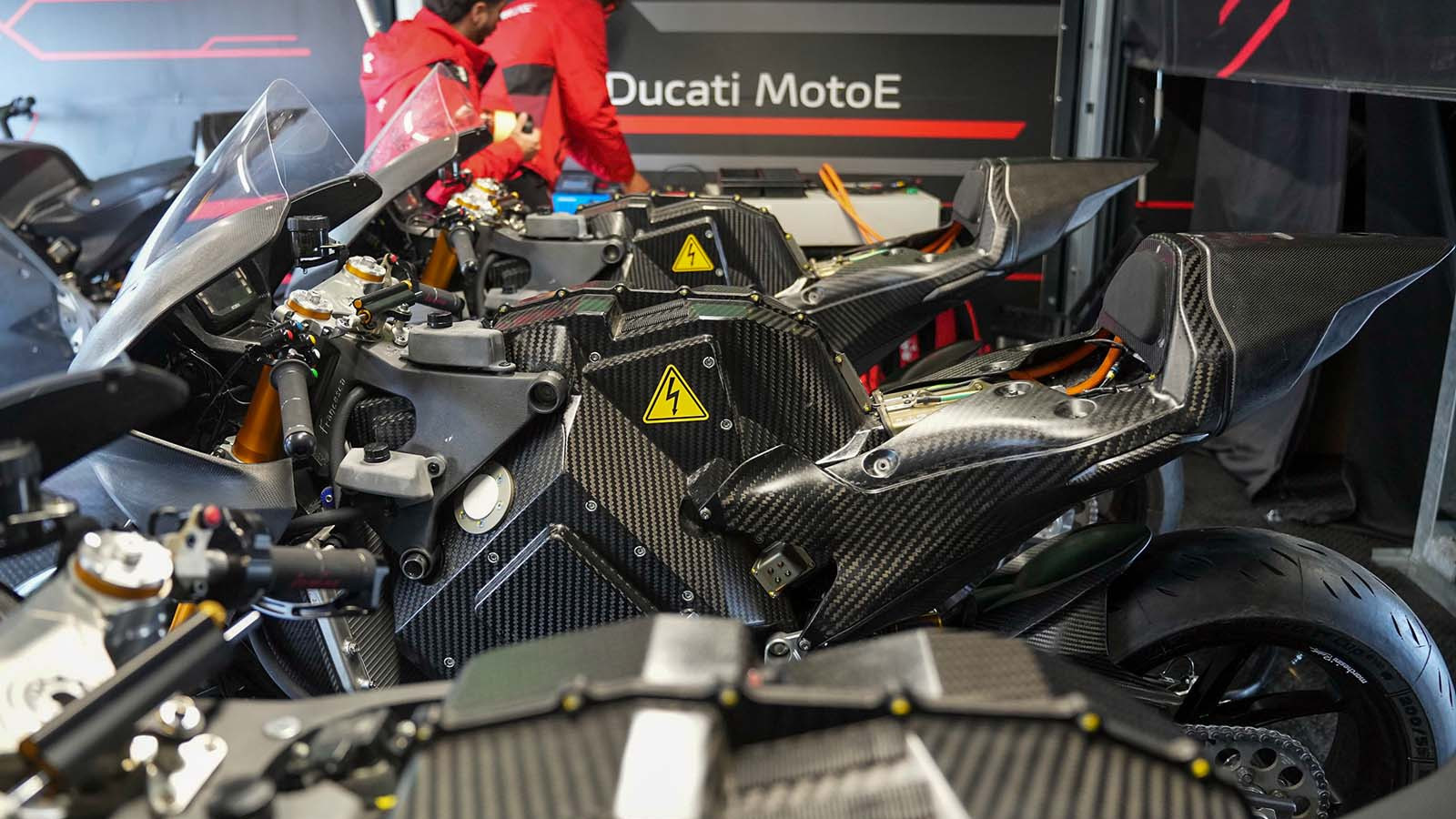 © Ducati
© Ducati -
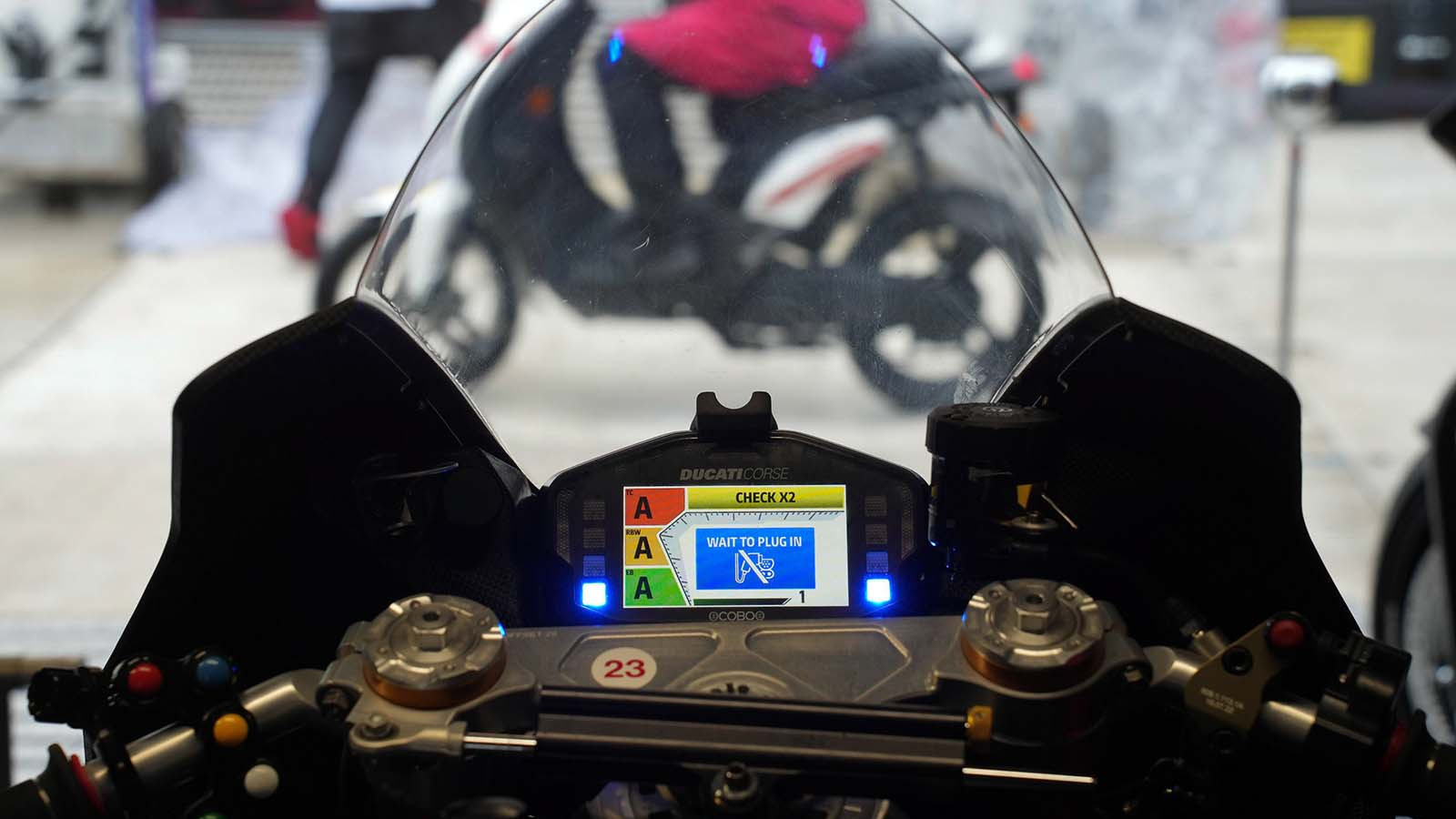 © Ducati
© Ducati -
 © Ducati
© Ducati -
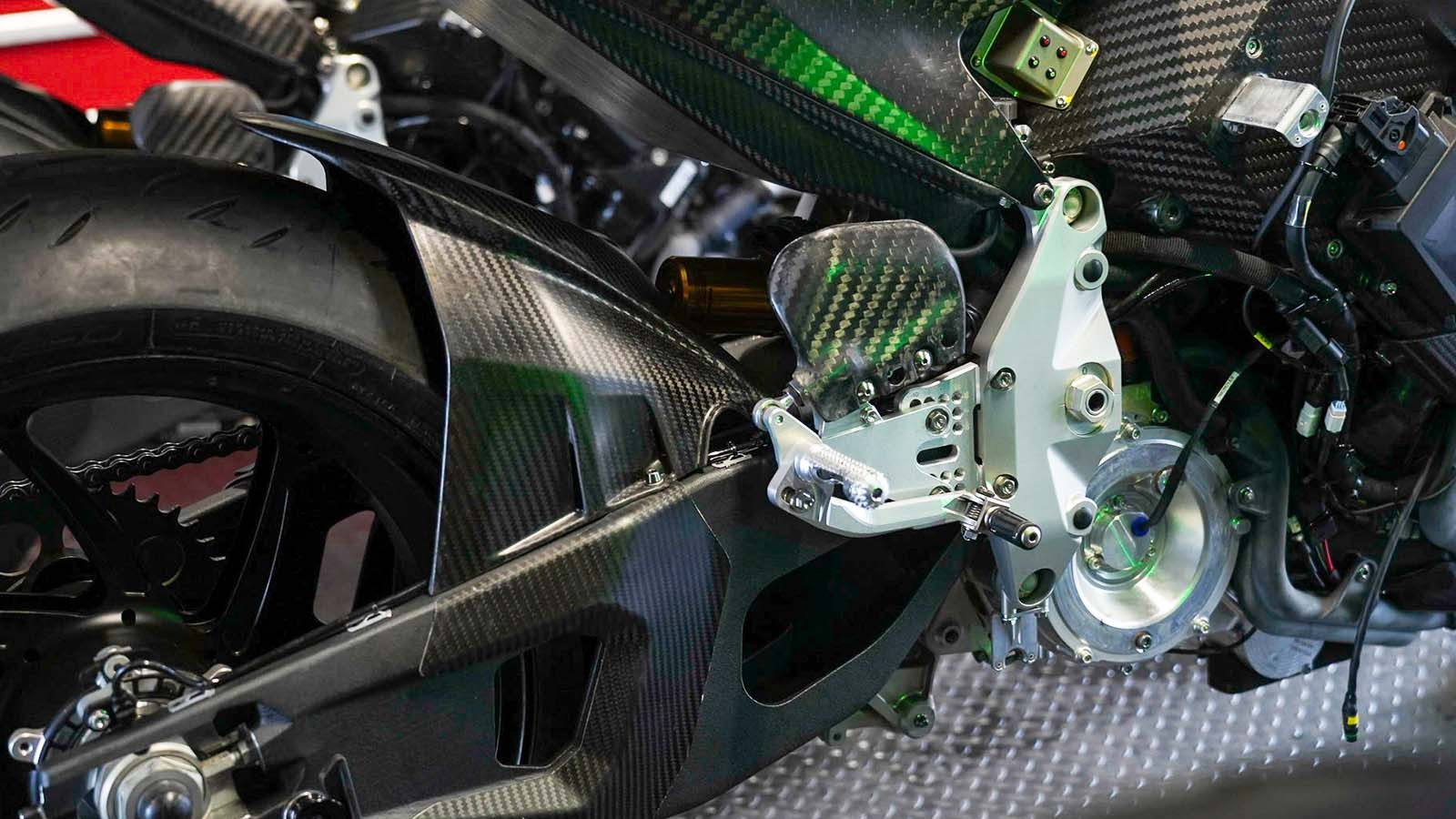 © Ducati
© Ducati -
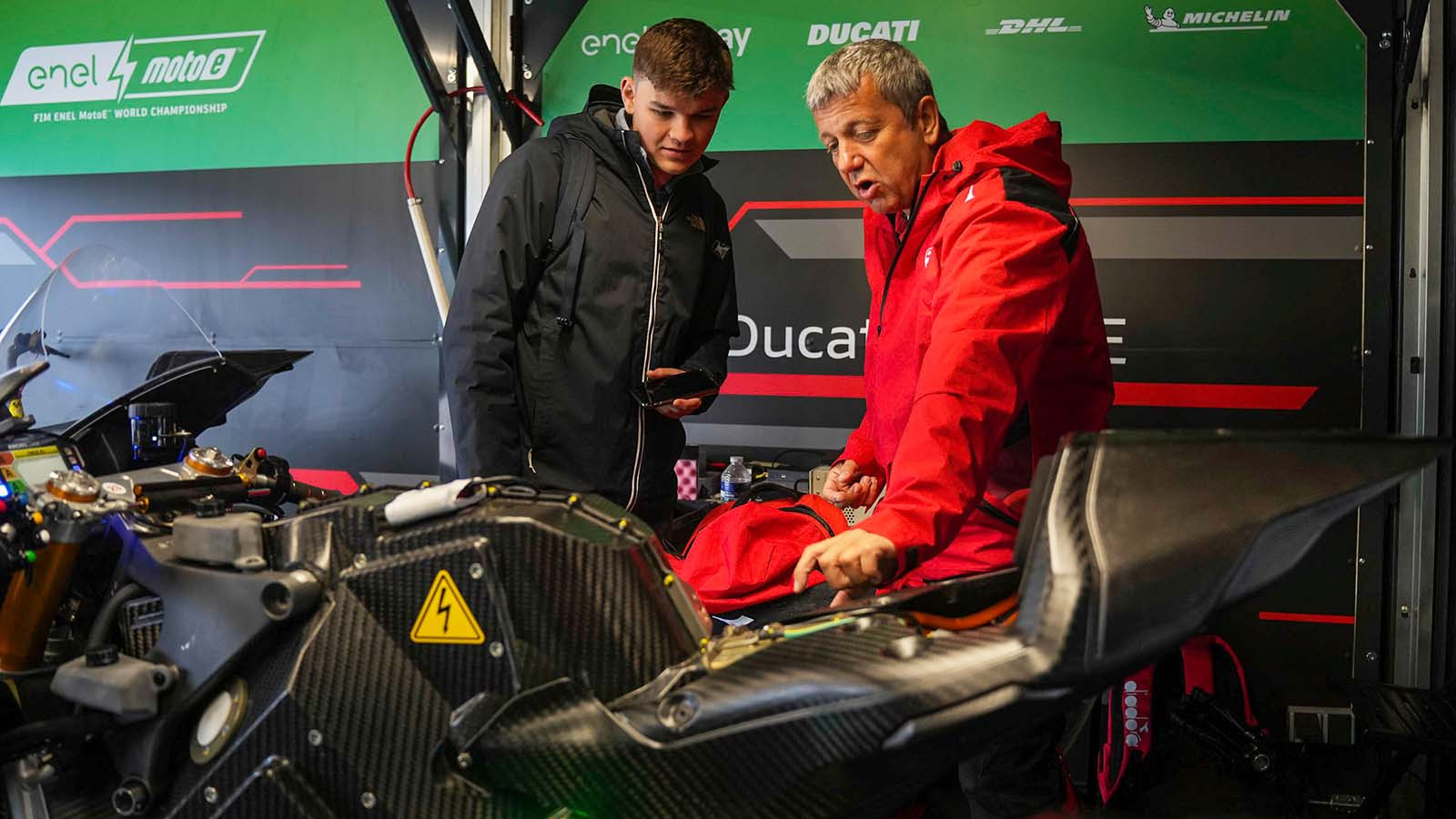 © Ducati
© Ducati -
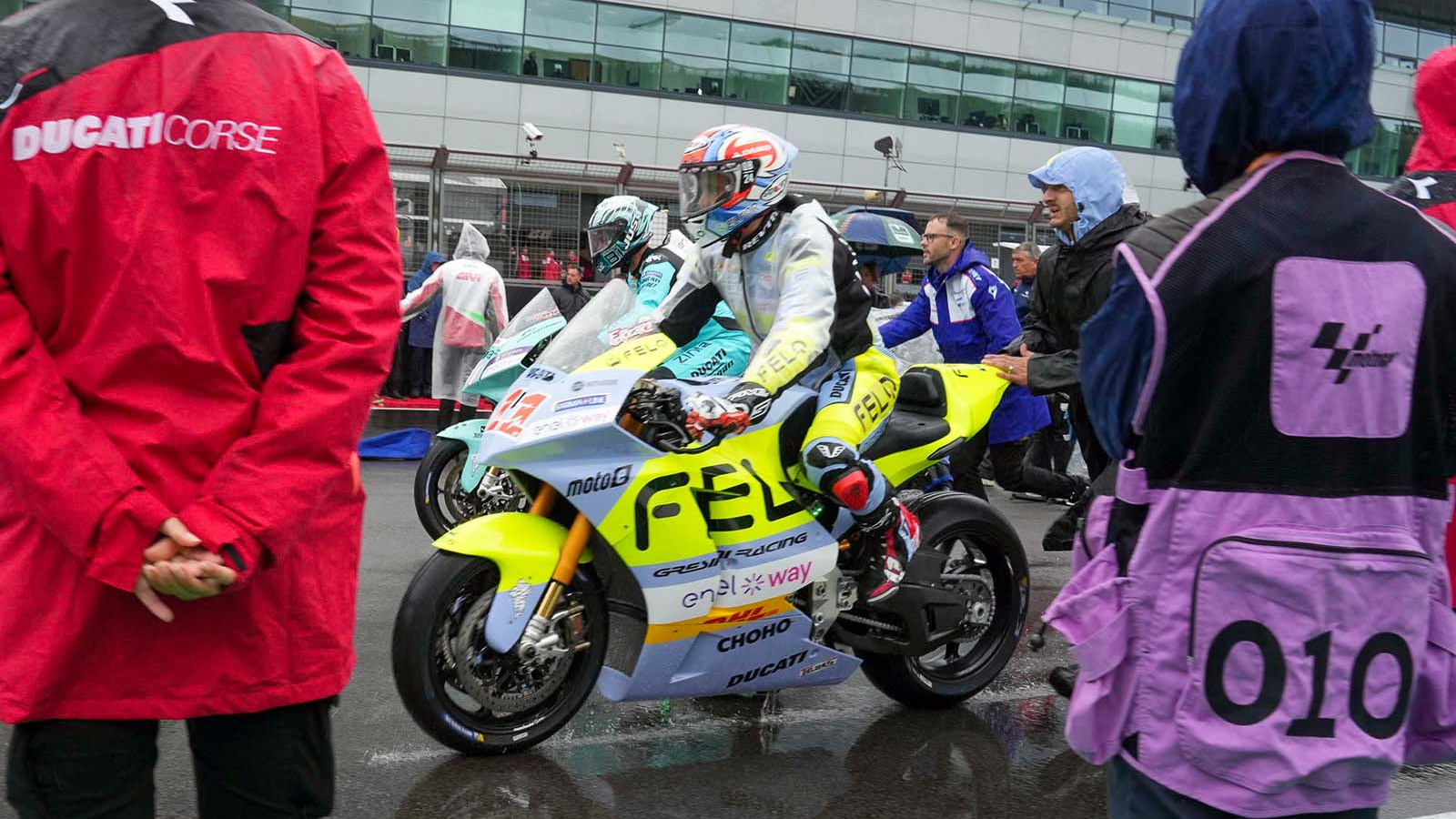 © Ducati
© Ducati -
 © Ducati
© Ducati -
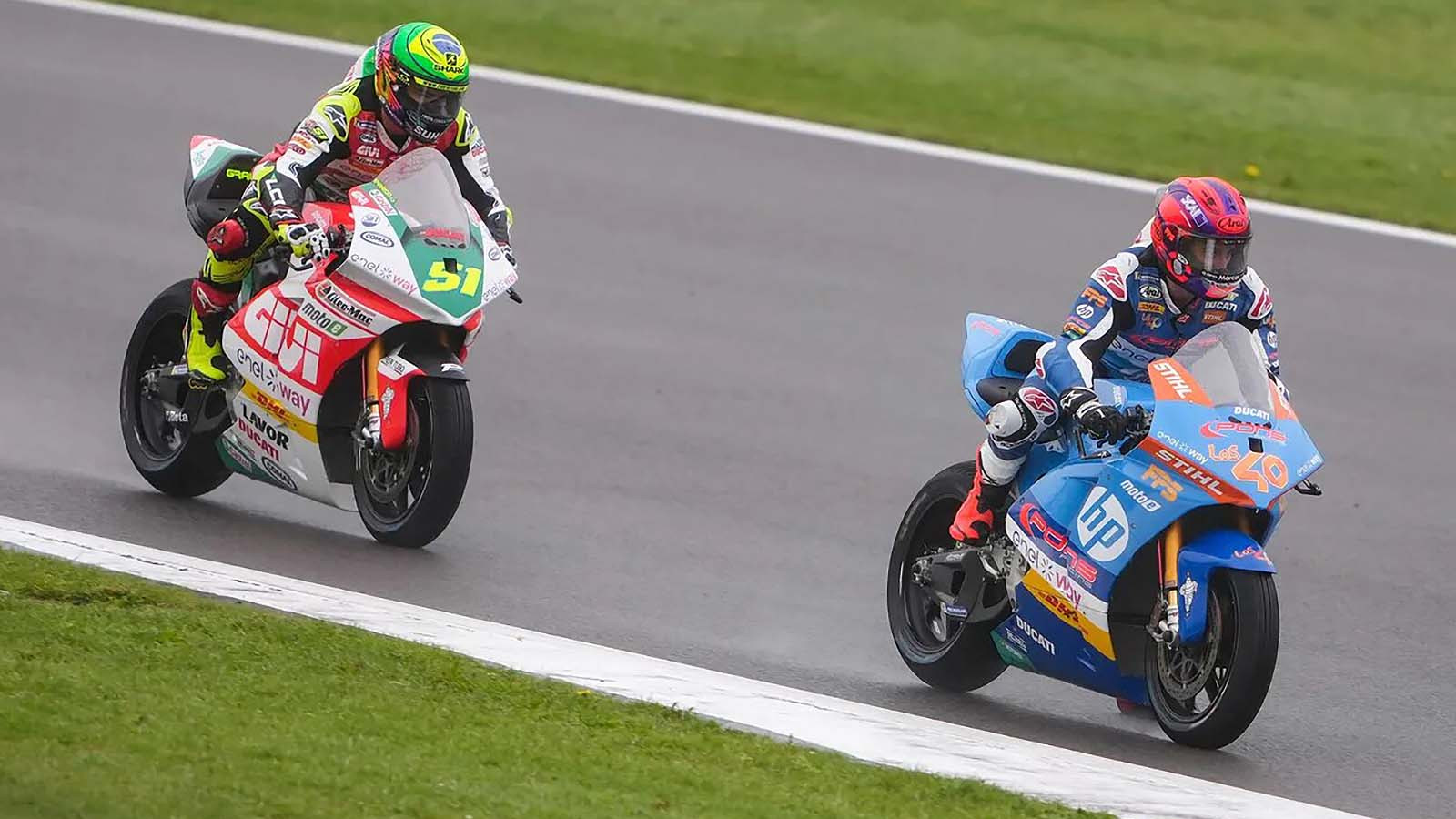 © Ducati
© Ducati -
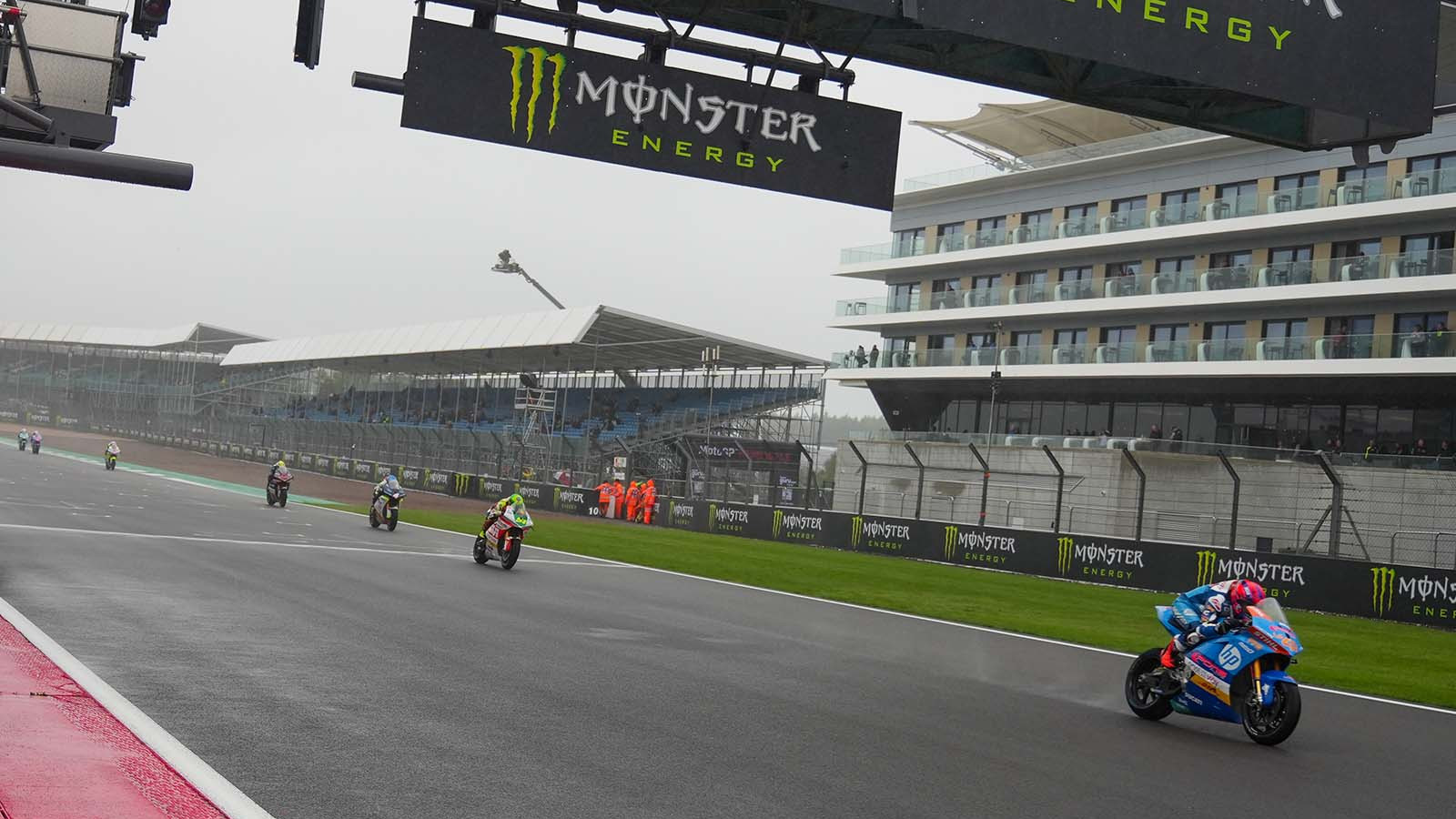 © Ducati
© Ducati
-
MotoE might be a relatively new racing series, but the all-electric championship has proved to be an excellent way of showcasing the potential of electric power in performance-based motorbikes.
Now in its fifth year of competition, MotoE sees 18 riders hustle a 170mph electric motorbike around some of the best racing circuits in the world.
-
This year the electric race series has undergone and number of big changes, the most significant being a switch from an Energica-made racer to a machine developed by storied motorbike brand, Ducati.
The Italian firm secured the deal to take over from Energica as the maker of the MotoE spec e-motorbike last year, with the championship used as a test bed for Ducati's development of electric customer bikes.
-
Ducati unveiled its 170mph MotoE challenger at the end of 2021, with the striking machine featuring an 18kWh battery and 110kW (150hp) motor. Impressive statistics for a first attempt, but its still a heavy machine, with the V2L tipping the scales at 225kg.
The Italian firm laboured to save as much weight as possible: the battery casing, for example, is made from carbon fibre and there are no physical rear brakes which instead uses a regenerative system.
-
Nine teams are entered into the MotoE series, with eight rounds making up the championship. During a weekend, riders take part in two races, with the number of laps determined by the length of the circuit.
-
Leading Ducati's MotoE project is the firm's head of e-mobility, Roberto Cané, the man who spearheaded the development of the V2L e-motorbike.
We travelled to Silverstone for this year's British Grand Prix to speak with Cané, to learn more about the V2L electric racer, how Ducati is finding the MotoE championship and the firm's plans for the future in the electric era.
-
What has Ducati learned from MotoE so far?
"We decided to enter this championship because, first of all, it's very exciting to be in a racing environment. But importantly MotoE is an advanced R&D department for developing electric motorcycles and that is the main goal for us."
"When Dorna asked us if we were interested in providing the motorcycles for the race series, we answered yes immediately because we found that it would give us the best possibility to develop an electric motorcycle in a controlled environment."
-
"It's also allowed us to gain a lot of knowledge because before this project nobody at Ducati was developing an electric powertrain. So far we’ve had very good results and here at Silverstone we can gather more information."
-
How much technology has been carried over from MotoGP into the V2L?
"We have developed a lot of electronics, software, strategy, controls etc during our years in MotoGP and World Superbikes. We took the same development for other formulas and carried it over into this new championship.
"For example, we did the very first test in Misano, and our test rider Michele Pirro did a lap, came back into the pits and I asked him how the bike felt. He took at least a minute before he told me that it was perfect and behaved very similarly to a MotoGP bike, although a bit heavier and slower."
-
"Some other things we have carried over from Moto GP is the dashboard. And beyond that these systems are also feeding our production bikes like the Panigale, because we are always trying to exploit our past developments."
-
Can you tell us more about the battery?
"It’s actually quite an unusual shape because we gave ourselves two targets: the first one was to fill all the empty space and use it for the maximum energy possible; the other target was to create a bike that behaves like a racing motorcycle.
"Weight distribution was very important which is why we have this strange shape because we didn’t want to have all of the weight at the front of the bike."
-
"Other parts of the electric powertrain don’t take up as much space, like the electric motor which is very small. You would never think that an electric motor with 150bhp could be this small. The controller and inverter are also hidden in a box under the seat, so it's only the battery that is the biggest part of the electric powertrain.
"And the electric motor can be made even smaller and more powerful, so the motor is never a big problem."
-
How does the regenerative braking system work?
"You press the pedal, electronics read the pressure, and apply negative torque to the motor. It's not so different from hydraulic mechanical brakes."
-
Will Ducati update the V2L bike for every season?
"The bike will not change so much over the next few years, but ultimately the bike is an R&D department for us, so if we find new technologies that are interesting and need to be tested in a controlled environment like Moto E, then we will be the first ones to propose it to Dorna.
"The idea is to have some small improvements over time."
-
How important are aerodynamics?
"The efficiency for electric bikes is very important because they have a limited range, but also because they are racing bikes that are going extremely fast.
"We worked a lot on the aerodynamics of the bike because it is a high priority compared to other parts of the machine. For example, we looked at the winglets from MotoGP, which are designed to keep the bikes steady on the ground, but because the V2L is heavier we didn’t need to implement these onto our machine and got better results."
-
Can you draw any comparisons of the V2L with a petrol machine?
"Right now you cannot compare an electric bike with a petrol bike because the ICE machine has the performance that a petrol bike cannot reach. An electric motorbike is a different thing and you have to test it to understand it well.
"A lot of people say they will never ride an electric motorcycle; I invite them to try it because it is a completely different feeling. They might not have the same performance now but give it time."
-
You have race fans and customers who come to Ducati to buy performance bikes. How do you make electric machines just as desirable as your ICE-powered motorbike?
"We don’t want to move customers from the petrol side to the electric side, or scare people into thinking that we are not going to produce petrol bikes. But it's not one against the other, the experience of electrification is not bad; it’s something different.
"We are making different prototypes in order to understand electric motorbikes better, because the idea is to have a parallel path alongside the petrol bikes."
